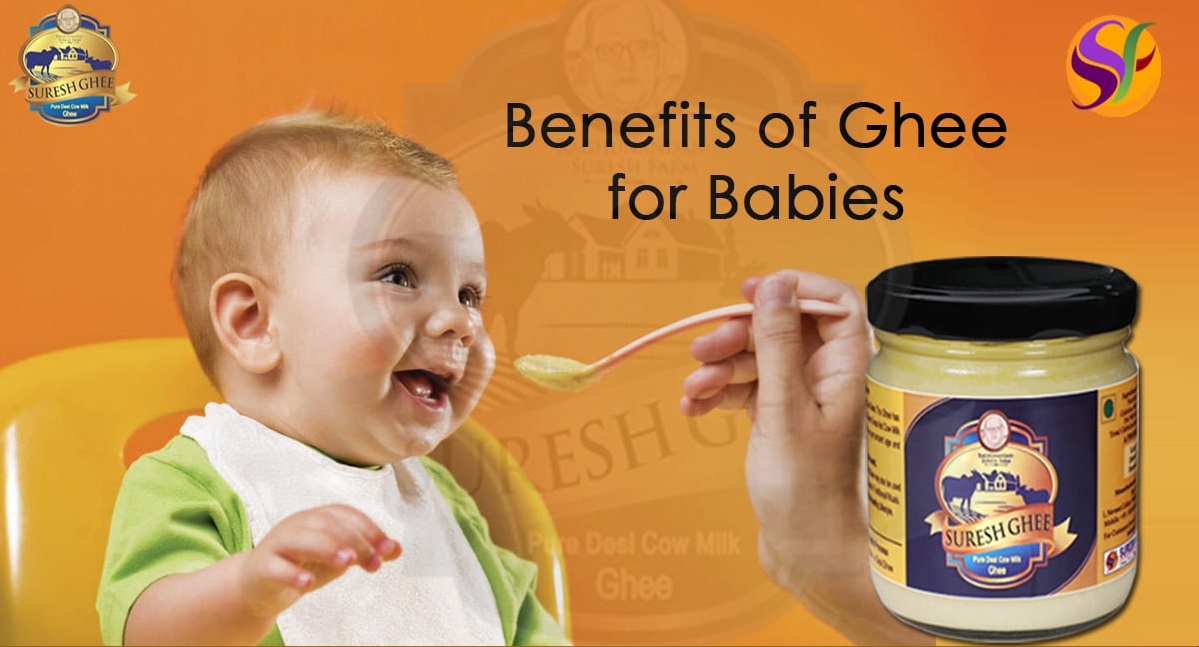When can babies eat ghee?
Ghee may be presented as quickly as a baby prepares to begin solids, which is generally around 6 months of age. Ghee is a milk product, and also dairy is an usual irritant, so make sure when presenting ghee as well as other dairy products like cow's milk, which ought to be booked till after the first birthday. See Milk Frequently asked questions to learn more.
Warning
Ghee can sometimes contain honey, which is related to an increased danger of infant botulism-- a rare however possibly deadly condition brought on by Clostridium botulinum spores, which conquer a baby's digestive tract and also produce toxic substances that assault the nervous system.1 2 Read tags very closely as well as seek ghee with couple of active ingredients on the tag, preferably, simply "made clear butter" or "milkfat", as well as, in many cases, "lactic acid." Stay clear of ghee which contains added salt, sugar, or honey.
Ghee or butter-- which is much better for infants?
Both butter and also ghee are fine foods to offer to infants as part of a well balanced diet. Actually, ghee is among the very first foods introduced to infants in some parts of the globe. Rich in fat as well as taste, ghee is a sort of cleared up butter, or simply put, milk fat that has been rendered of milk solids and also water-- a procedure that grows the nutty taste and extends the life span of the milk item.
Ghee originated in South Asia, where it has actually held unique relevance in ritualistic techniques and daily cooking for centuries. Cooks use ghee due to the fact that its high smoke factor (482 Fahrenheit or 250 Celsius) makes it a terrific choice to food preparation oils that transform rancid at high temperatures. It also improves taste; merely mixing melted ghee into a meal includes scrumptious flavor. As an example, in India, the world's largest producer of ghee, the staple food seasons myriad dishes, from celebratory biryani to weekday dals to khichdi, a hearty mix of moong dal, rice, and also spices toasted in ghee and ghee for baby massage.

Is ghee healthy for children?
Yes. Ghee has a great quantity of vitamin A for vision, skin, and also resistance and also traces of vitamin E to power an infant's growth and advancement. Ghee is likewise loaded with saturated fat-- the most plentiful sort of fat in bust milk. In recent times, saturated fat has been looked at for its association with cardiovascular disease in grownups, but research shows that it fits as a part of a balanced diet plan, and that it might have a much more neutral impact on the heart than formerly assumed.3 4
Wondering if you require to purchase organic ghee? Instead of worrying about organic versus non-organic dairy, usage ghee that is available to you and also try expanding the fat in a baby's diet plan by occasionally swapping ghee for oil, such as avocado oil, coconut oil, olive oil, peanut oil, or sesame oil, which are all high in healthy fats. Feel confident that ghee made from either organic as well as non-organic cow's milk supplies a lot of nutrients to nurture a growing a baby. What is essential is equilibrium: offering an array of fruits, veggies, and also various other entire foods with healthy fats and proteins is ideal for growing children as well as young children.
★ Pointer: Ghee can be kept in the refrigerator, where it strengthens and also lasts for a minimum of 1 year or in a cupboard at space temperature for approximately 6 months.5 Ghee might thaw at space temperature level, yet it is still great as long as it doesn't scent rancid.
How much ghee can infants and also toddlers eat?
For youngsters under the age of 2, fat intake should not be restricted since it offers lots of power to fuel the rapid growth of their brains as well as bodies.6 7 The secret is to supply ghee as a part of a well balanced diet regimen-- and allow infant blaze a trail on how much food is consumed.
Is ghee a typical choking hazard for children?
No. Ghee is not a common choking threat, however, in theory, a person can choke on any type of food. As constantly, ensure to produce a risk-free consuming environment, stay within arm's reach of child at nourishment, as well as have a look at our age-appropriate offering tips. For more information on choking, see our section on gagging and also choking and acquaint on your own with the checklist of typical choking dangers.
Is ghee a common irritant?
Technically, yes. Ghee is usually made from cow's milk, which is a common food allergen in young kids and also make up about 20% of all childhood years food allergic reactions.8 Ghee made from milk of other mammals (such as buffalo, goat, lamb, or yak) may prompt similar allergic reactions to ghee made from cow's milk.9.
Fortunately is that milk allergic reaction typically fixes with time; research shows that the majority of children with cow's milk allergic reaction will certainly outgrow it by age 6, which several infants with milder symptoms of milk healthy protein allergy (which can show up as pain-free blood in feces) are able to successfully reintroduce cow's milk as very early as the first birthday, with the support of the ideal pediatric health expert.10 Ghee is thought to be less allergenic than other milk items given that the milk solids (or healthy proteins, which promote milk allergic reaction) are gotten rid of. However, production techniques can vary, so ghee might not be 100% free of milk solids. Talk to an allergist for more information on this subject and click now.
A lot more great news: youngsters with lactose intolerance can frequently eat ghee because it has minimal lactose content.11.
If you think your infant may dislike dairy products, seek advice from an allergist prior to introducing ghee. As with all irritants, begin by offering a little amount on its own in the beginning. If there is no unfavorable response, slowly enhance the amount offered over future meals.
Recommended Guide: Introducing Allergens to Babies.
Just how do you introduce ghee to infants with baby-led weaning?
Every baby develops on their own timeline, and the pointers on just how to cut or prepare certain foods are generalizations for a wide target market. Your youngster is a specific and may have needs or factors to consider beyond typically accepted practices. In establishing the suggestions for shapes and size of foods, we make use of the most effective readily available scientific information relating to gross, great, as well as dental electric motor development to reduce choking threat.
The prep work pointers we offer are for informative functions just and also are not an alternative to child-specific, one-on-one suggestions from your pediatric clinical or health expert or supplier. It is impossible to completely remove all risk of a child or child choking on any type of fluid, puree, or food. We recommend you to follow all security methods we recommend to create a secure consuming setting and also to make informed choices for your kid concerning their details requirements. Never ever disregard specialist medical advice or hold-up in seeking it because of something you have reviewed or seen here.
6 to 9 months old: Mix a scoop of ghee into child's food, such as cooked veggies or gruel. A little goes a long way! If using salted ghee, deal in moderation to stay clear of excess salt to child's diet plan. Plant-based babies can opt for oils such as olive and also coconut for an extra boost of fats. At this age, you can likewise provide a salt- and sugar-free pancake or other baked good made with ghee.
9 to twelve month old: Continue adding a little scoop or two of ghee to child's meals. As the body grows and activity as well as appetite rise, child's intake of ghee might naturally increase as a result. Fats, such as those from ghee, provide an exceptional source of energy for expanding infants. Attempt offering ghee on toast, veggies prepared in ghee, or ghee mixed into rice or various other grains.
12 to 24 months old: Play around with ghee as a condiment! Explored adding seasonings like cumin, mustard seed, or turmeric to ghee-- an outstanding means to instill more flavor right into dishes as well as expand a kid's repertoire of tastes.


